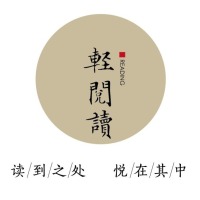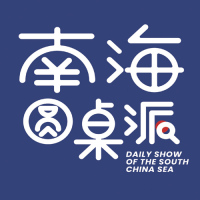



















Beware of Attempts to Undermine the Post-WWII Order in the South China Sea Region Through the Arbitration Ruling
The evolution of the South China Sea regional order in modern times can be roughly divided into three stages, marked by three key historical milestones: the late 19th to early 20th century, the early 1930s, and the end of World War II in 1945. The contemporary order in the South China Sea region is an integral part of the post-WWII international order. After the war, China lawfully regained sovereignty over the South China Sea islands through international arrangements and resumed exercising its sovereignty and historical rights formed through long-term historical practice. The underlying logic of the Philippines’ South China Sea arbitration ruling is a misguided attempt to dismantle the existing regional order—one that is grounded in historical facts and post-war arrangements—by imposing modern international law to redraw territorial and maritime rights in the South China Sea. Looking at the patterns of change in the international system, “hard” adjustments to regional orders often lead to conflict and turmoil. In reality, the arbitration ruling has already intensified tensions at sea and is fueling the risk of a larger conflict.
Before Western concepts of sovereignty spread to East Asia, the order in the South China Sea region was part of a distinct East Asian system. This traditional order emphasized shared benefits from fishing and salt production, as well as the convenience of maritime transport, highlighting joint use and peaceful coexistence. However, with the expansion of Western colonial powers—including Spain, the Netherlands, Britain, France, and Germany—into East Asia, the South China Sea entered a new era dominated by competition.
Era of Great Power Competition: In the late 19th and early 20th centuries, as the resource potential of South China Sea islands (such as guano) and their geopolitical value became increasingly prominent due to rising competition among major powers, maritime powers like Britain, France, and Japan began eyeing China’s Dongsha Qundao, Xisha Qundao, and Nansha Qundao. Particularly, islands with better natural conditions—such as Jinqing Dao and Ganquan Dao in the Xisha Qundao, and Taiping Dao in the Nansha Qundao—drew the interest of colonial powers, triggering the first wave of great power competition over the South China Sea in history.
Era of Colonial Invasion: In 1930, France seized Nanwei Dao in the Nansha Qundao by force, and in 1933, declared occupation of a number of features in the Nansha Qundao, including Taiping Dao, Anbo Shazhou, Beizi Dao, Nanzi Dao, Nanyao Dao, Zhongye Dao, Hongxiu Dao, and Xiyue Dao. In response, the Chinese government took steps to reassert order in the South China Sea. Although constrained by its weak national strength and the ongoing war against Japanese invasion, which forced it to temporarily shelve some actions, China officially reaffirmed sovereignty over these islands by approving and publishing the names of islands, reefs, shoals, and sands in the South China Sea and issuing the Map of the South China Sea Islands of China. This confirmation of sovereignty went largely uncontested by the international community.
Post-WWII Arrangements: In 1939, Japan illegally occupied parts of the Xisha Qundao and Nansha Qundao. Following Japan’s defeat in 1945, the international community made arrangements concerning sovereignty over the South China Sea islands. China, under the 1943 Cairo Declaration and the 1945 Potsdam Proclamation, resumed sovereignty over the South China Sea islands. The Cairo Declaration explicitly stated that territories Japan had seized from China, such as Manchuria, Taiwan, and the Penghu Qundao, were to be returned to China. With the support of six warships provided by the United States, China recovered the South China Sea islands in 1946 in accordance with post-war international arrangements.
Meanwhile, in 1947–1948, the Chinese government published the Location Map for the South China Sea Islands, which featured the South China Sea dashed line, reaffirming China’s maritime rights under the historical context of that time. In fact, the dashed line did not create new maritime claims for China; rather, it continued and confirmed China’s factual rights in the South China Sea based on history and long-standing practice.
In September 1951, the Treaty of San Francisco stipulated that Japan renounced “all right, title and claim to the Nansha Qundao and Xisha Qundao.” In response to deliberate attempts by the United States, France, and Japan to obscure the sovereignty of the South China Sea islands, the Chinese government issued the Statement on the U.S.-British Draft Treaty with Japan and the San Francisco Conference in 1951. The statement pointed out that the draft treaty deliberately required Japan to renounce all rights to Nanwei Dao and Xisha Qundao without addressing the restoration of sovereignty. China reaffirmed that its indisputable sovereignty over Nanwei Dao and Xisha Qundao remained unaffected, regardless of whether or how the U.S.-British draft treaty with Japan addressed the issue.
Although the United Nations Convention on the Law of the Sea (UNCLOS) does not address territorial disputes, the arbitration ruling essentially attempted to impose a subjective and distorted narrative under modern international law to redefine territorial arrangements in the South China Sea. The tribunal ruled that, apart from Chigua Jiao, Yongshu Jiao, and Huayang Jiao, other features in the Nansha Qundao cannot generate territorial seas, and that none of the islands in the South China Sea can claim extended maritime zones. While the tribunal nominally focused on assessing the legal status of specific features in their natural conditions, its ruling effectively applied to almost all features. Notably, Taiping Dao, the largest naturally formed feature in the Nansha Qundao, was ruled as unable to claim an exclusive economic zone, which raises serious questions.
Following the ruling, official statements from the U.S. and the Philippines openly confirmed their intent to use it to revise post-WWII territorial arrangements in the South China Sea. Although the arbitration ruling did not cover certain features such as Zengmu Ansha and Wan’an Tan in the Nansha Qundao, the U.S. and the Philippines used the so-called ruling as a pretext to make unilateral assertions over these features’ sovereignty. On July 13, 2020, then U.S. Secretary of State Mike Pompeo issued a statement declaring that Huangyan Dao, Meiji Jiao, and Ren’ai Jiao have no lawful territorial claims and fall under Philippine sovereignty and jurisdiction. He further asserted that Wan’an Tan and Nankang Ansha and Beikang Ansha belong to Vietnam and Malaysia respectively, and that China has no lawful territorial claim to Zengmu Ansha—an outright attempt to intervene in the territorial allocation of the South China Sea. Likewise, the current Marcos administration in the Philippines continues to invoke the arbitration ruling to challenge China’s sovereignty claims over certain features, making assertions over Huangyan Dao, Ren’ai Jiao, Xianbin Jiao, Houteng Jiao, and other islands and reefs in the Nansha Qundao.
UNCLOS does not clearly define “historic rights,” but the arbitral tribunal imposed a doctrine of “international law supremacy” over “historical facts and practices.” By applying a literal and selective interpretation of international maritime law and state practice, the tribunal divided maritime rights in the South China Sea. It ruled in favor of the Philippines, concluding that China’s claims to historic rights—based on the “dashed line” and long-standing resource use—lack legal basis under international law. The tribunal adopted a narrow, rigid, and highly unrealistic standard to assess China’s long-term, consistent historical practices—such as discovery, naming, development, administration, and effective governance in the South China Sea. This approach went far beyond an objective legal interpretation, effectively “recreating” the concept of historic rights under UNCLOS through its own subjective lens.
Through its rulings on the legal status of Huangyan Dao and certain features in the Nansha Qundao, as well as on historic rights, the tribunal employed a so-called “onion-peeling” approach—starting from maritime jurisdiction and gradually extending inward. Ultimately, it cloaked in legal language the false narrative that maritime claims should determine territorial sovereignty over features. In doing so, it blurred the line between maritime delimitation and sovereignty over land territory, attempting to bypass the fact that UNCLOS does not address territorial sovereignty issues. The United States and the Philippines have tried to exploit the arbitration ruling to reconstruct the territorial and maritime order in the South China Sea, undermining the post-WWII arrangements. Ironically, the U.S.—a key architect of the post-war regional order—is now actively dismantling it, placing unilateral national interests and strategic calculations above the broader goal of regional peace and stability.
Nine years have passed since the tribunal issued its so-called award. During this time, China, the Philippines (under the Duterte administration), and other regional countries have made significant efforts to manage maritime tensions, keep the situation under control, and foster a more stable and positive environment in the South China Sea. These efforts include bilateral consultation mechanisms between China and the Philippines, accelerated dialogue mechanisms between China and Malaysia on maritime issues, and the completion of the third reading of the Code of Conduct negotiations, which have now entered a crucial stage. In fact, the collective efforts by China and ASEAN countries to stabilize the South China Sea have been greater than at any point in history. However, the disruption caused by the arbitration ruling has rendered these efforts largely ineffective. While the South China Sea appears relatively stable on the surface, underlying tensions are rising, and the looming restructuring of the regional order is brewing an unpredictable and complex crisis.
The arbitration case and its ruling have put the international legal order—based on international law—at serious risk. The modern international legal system, with the UN Charter at its core, was created in response to the painful lessons of the two World Wars, aiming to safeguard global peace and security. Treaties such as UNCLOS regulate state conduct in various fields and regions to reduce the risk of disorder, conflict, and war. However, the absence of a supranational enforcement authority means that the sustainability of the international legal order relies heavily on fairness and equity. The arbitration case—driven by political manipulation—and its politically motivated ruling have stained the international maritime order with the taint of great-power rivalry. Cloaked in the guise of legal authority, the ruling violates UNCLOS and other fundamental international legal principles, undermining the seriousness of the legal system itself. It weakens global confidence in an international order based on law and shakes the very foundation of international rules. If China were to accept the so-called ruling, it would effectively be acknowledging that power politics override international law. By firmly upholding its position of “non-acceptance, non-participation, and non-recognition,” China is, in fact, defending the integrity of the rules-based order in the South China Sea.
The illegal and unreasonable reshaping of territorial and maritime boundaries has intensified maritime tensions and sown the seeds for potentially larger crises.
Some claimant states, such as the Philippines, constantly invoke the arbitration ruling, treating it as the ultimate authority on all maritime legal matters. Under the guise of “legal justification,” they have aggressively pursued unilateral actions in disputed and sensitive waters of the South China Sea. While differing interpretations of international maritime law, including UNCLOS, are not uncommon, the real danger arises when claimant states internalize the ruling into their domestic legal systems and then use it as a shield to escalate unilateral actions. In such cases, confrontation, even outright crises, becomes inevitable. Since 2023, the Marcos Jr. administration in the Philippines has moved beyond rhetoric. It has sought to “legitimize” the arbitration ruling through domestic legislation and on-the-ground actions. From passing the Maritime Zones Act to repeatedly intruding into and landing on disputed features, the Philippines has relied heavily on the so-called ruling as justification. However, its increasingly provocative unilateral moves over the past two years have pushed China-Philippines relations back into crisis mode. Standoffs and tense cat-and-mouse encounters between the two sides at Huangyan Dao, Ren’ai Jiao, Xianbin Jiao and Tiexian Jiao have turned the region into a flashpoint of potential crisis stretching from north to south. Vietnam and Indonesia’s EEZ delimitation deal, along with unilateral submissions on extended continental shelf claims by Malaysia, Vietnam, and the Philippines, are also closely tied to the arbitration ruling, which has arguably been the “original driver” behind these developments. Yet this ongoing maritime and seabed “land grab” is not merely a legal battle in courtrooms. The evolving contest over maritime rights risks triggering stormy, real-world maritime confrontations. In order to consolidate their claims, various parties may resort to more frequent patrols or even military maneuvers, making unexpected incidents at sea increasingly likely. This situation poses a profound challenge to regional relations and cooperation, pushing the South China Sea into uncharted and dangerous waters.
The arbitration ruling has created a new flashpoint for geopolitical competition. The United States’ manipulation of the South China Sea arbitration was never simply about undermining the legal basis of China’s maritime claims. Its deeper goal has been to reshape the regional rules-based order according to U.S. preferences. This envisioned order includes procedural arrangements for dispute resolution, the distribution of maritime rights, and legal interpretations of sovereignty over islands and reefs. By leveraging the arbitration ruling, the U.S. aimed to minimize China’s ability to control key sea lanes and to prevent Beijing from gaining a leading role in shaping regional order. However, this also means that China-U.S. competition in the South China Sea has moved beyond military power to focus on the contest for rule-making dominance, thereby triggering a new wave of geopolitical tensions. On one hand, Washington seeks to secure its dominance over the regional rules framework by building small multilateral security partnerships. On the other hand, it has pursued hard-power measures such as deploying intermediate-range missile systems, unmanned vessels, and expanding its military base network to enforce its vision of an “American-led order.” Both efforts—rooted in the arbitration ruling—have pushed China-U.S. competition toward the brink of a “new cold war,” planting the seeds for further geopolitical rivalry in the South China Sea.
Although the arbitration ruling has become a matter of the past, its lingering effects and destructive impact remain far from over. It continues to act as a “cancer” undermining efforts to improve the overall situation in the South China Sea. To eliminate the ruling’s toxic legacy and restore global confidence in a rules-based order in the South China Sea, there is only one solution: to discard the so-called ruling into the dustbin of history. China and ASEAN countries must work together to repair the damaged regional order and restore peace, friendship, and cooperation as the main themes of the “Song of the South China Sea.”
(Author: Chen Xiangmiao, Special invited researcher of the CMG Expert Committee on South China Sea Studies, Director of the Research Institute for South China Sea History and Culture at the National Institute for South China Sea Studies, and Adjunct Fellow at the Huayang Center for Maritime Cooperation and Ocean Governance, )



















